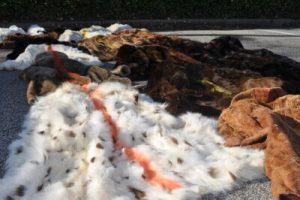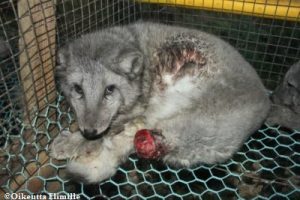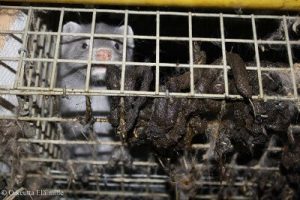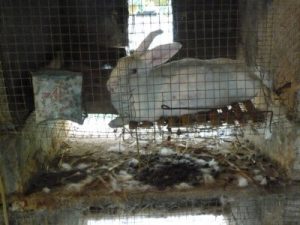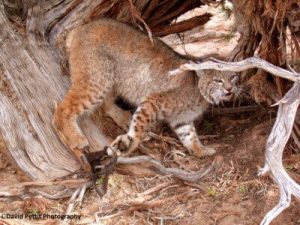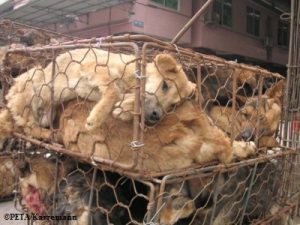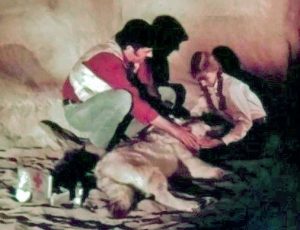 My character on “Lassie,” Lucy Baker, was introduced in a three-part story in the spring of 1972. Lucy Baker was a nature-loving deaf girl who befriends Lassie and the two have many adventures together. In one of those first episodes, titled “Paths of Courage, Part One,” Lucy has a beloved pet wolf named Mountie. A sadistic sheep herder shoots Mountie and I have a tearful scene as the wolf dies in my arms. It turned out to be one of the most memorable scenes of my acting career.
My character on “Lassie,” Lucy Baker, was introduced in a three-part story in the spring of 1972. Lucy Baker was a nature-loving deaf girl who befriends Lassie and the two have many adventures together. In one of those first episodes, titled “Paths of Courage, Part One,” Lucy has a beloved pet wolf named Mountie. A sadistic sheep herder shoots Mountie and I have a tearful scene as the wolf dies in my arms. It turned out to be one of the most memorable scenes of my acting career.
The wolf playing Mountie was tranquilized so that he would lay quietly in my arms, as seen in the accompanying photo. I felt horrible that this poor wolf was tranquilized for a scene, but that’s what happens to a lot of animals in TV and movies; they don’t ever get to live their lives the way nature intended. Luckily for Mountie, he had a goodhearted trainer in the person of Pat Derby. Pat Derby later became an outspoken advocate for animals, and I’ll tell you more about her in my forthcoming book. Anyway, my job was to kneel over Mountie and cry my eyes out. I was given very specific instructions not to put my face near his; a wild animal, especially when tranquilized, may react badly to his space being invaded. I heeded my instructions and was very, very cautious.
The director called for action, and I began to sob pitifully over my mortally wounded companion, all the while taking care to avoid putting my face near his. The wolf must not have been fully tranquilized because, as my tears fell he began to rouse. At first, I’m sure I was the only one to notice, but when he slowly lifted his head to look at me, I could sense a nervous stir among the crew.
The wolf began to lick the tears from my face. I was startled, but continued acting, unwilling –afraid, is the better word – to break the scene. It was so sweet – and so scary. The more I cried, the more the wolf licked my face. It dawned on me that this big, beautiful animal was trying to console a weeping little girl with kisses!
My instinct to carry on while the camera rolled proved a good one. The resulting footage of Lucy sobbing over her dying pet, with the wolf tenderly kissing his grieving companion goodbye, was nothing short of remarkable. Ever since then I’ve always had a special place in my heart for wolves.
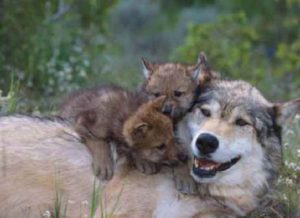 Did you know that legislation was finally enacted a few years ago to stop the slaughter of wolves by cowardly humans using high-powered rifles from inside low-flying airplanes and helicopters? Did you also know that last year, with a stroke of his pen, the president rescinded the Alaska National Wildlife Refuges Rule and opened the door for hunters to hunt and kill wolves, bears, and other animals within Alaska’s national wildlife refuges? Yes, both the House and Senate approved a measure to repeal existing legislation that protected Alaska’s most iconic animals on more than 76,000,000 acres, the largest land-based, federally-protected area in the United States.
Did you know that legislation was finally enacted a few years ago to stop the slaughter of wolves by cowardly humans using high-powered rifles from inside low-flying airplanes and helicopters? Did you also know that last year, with a stroke of his pen, the president rescinded the Alaska National Wildlife Refuges Rule and opened the door for hunters to hunt and kill wolves, bears, and other animals within Alaska’s national wildlife refuges? Yes, both the House and Senate approved a measure to repeal existing legislation that protected Alaska’s most iconic animals on more than 76,000,000 acres, the largest land-based, federally-protected area in the United States.
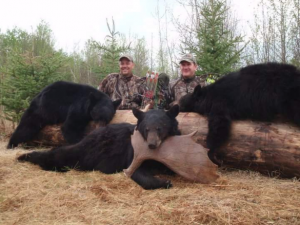 Once again, the killing of wolves and hibernating bears and the slaughter of cubs and pups in their dens is permitted in one of America’s last great wildlife refuges. Legal again are hunters scouting, chasing, and and killing brown and black bears from airplanes and helicopters. Legal again are trapping methods like steel-jawed leg hold traps, wire snares, and the luring of scavenging bears with food so that they may be shot at point-blank range. Despite years of relentless work by over 70 groups, many of them made up of Alaskan citizens, the law that protected these majestic wild creatures on the people’s land – land specifically created to protect and conserve native American wildlife and habitats in their natural diversity – has been senselessly and tragically wiped from the books.
Once again, the killing of wolves and hibernating bears and the slaughter of cubs and pups in their dens is permitted in one of America’s last great wildlife refuges. Legal again are hunters scouting, chasing, and and killing brown and black bears from airplanes and helicopters. Legal again are trapping methods like steel-jawed leg hold traps, wire snares, and the luring of scavenging bears with food so that they may be shot at point-blank range. Despite years of relentless work by over 70 groups, many of them made up of Alaskan citizens, the law that protected these majestic wild creatures on the people’s land – land specifically created to protect and conserve native American wildlife and habitats in their natural diversity – has been senselessly and tragically wiped from the books.
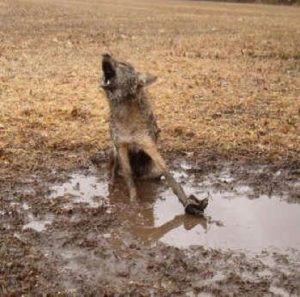 Steel jaw traps are banned or heavily restricted in many US states. Such traps inflict excruciating pain not only on the targeted animals, but also on any other animal that unknowingly sets off the trap, for these traps do not kill on impact, they snap shut on the leg or other body part when the victim steps on it. The trap inflicts deep puncture wounds to prevent the animal from writhing around and pulling itself free. Imagine slamming your hand in a car door with teeth and waiting in excruciating pain to die of shock, exposure, dehydration, starvation, or infection.
Steel jaw traps are banned or heavily restricted in many US states. Such traps inflict excruciating pain not only on the targeted animals, but also on any other animal that unknowingly sets off the trap, for these traps do not kill on impact, they snap shut on the leg or other body part when the victim steps on it. The trap inflicts deep puncture wounds to prevent the animal from writhing around and pulling itself free. Imagine slamming your hand in a car door with teeth and waiting in excruciating pain to die of shock, exposure, dehydration, starvation, or infection.
Leg hold traps, also banned in many countries around the world, are used primarily for foxes, coyotes, wolves, and lynx. These traps, which consist of a metal footplate with curved jaws and powered springs, break and crush the animal’s limb. Immobilized, the animal is trapped where they are, easy prey for predators, and without shelter from harsh weather conditions. Many become so desperate to escape they attempt to chew or wring off their trapped limb, breaking their teeth or bones in the process. When they don’t return to their den, their babies are left alone, unable to fend for themselves, and they die, too.
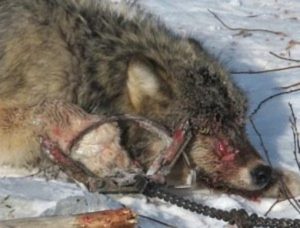 Wayne Pacelle, president and CEO of The Humane Society of the United States, spoke of the legislative surrender to special interests, saying, “What the Senate did should outrage the conscience of every animal lover in America,” adding, “The passage of this bill means that we’ll see wolf families killed at their dens, bears chased down by planes or suffering for hours in barbaric steel-jawed traps or snares.”
Wayne Pacelle, president and CEO of The Humane Society of the United States, spoke of the legislative surrender to special interests, saying, “What the Senate did should outrage the conscience of every animal lover in America,” adding, “The passage of this bill means that we’ll see wolf families killed at their dens, bears chased down by planes or suffering for hours in barbaric steel-jawed traps or snares.”
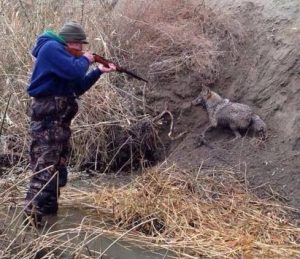 Although the repeal of the law was signed by the president, there are still ways to reduce the suffering for these animals. The main way is to stop buying fur products and to encourage others to do the same. Many animals are hunted for their pelts, and if there is no demand for them, there will be less reason for hunters to trap them. We can also spread awareness about this heinous slaughter, send letters to our representatives in Congress, and sign petitions to end the horrific torture caused by these practices.
Although the repeal of the law was signed by the president, there are still ways to reduce the suffering for these animals. The main way is to stop buying fur products and to encourage others to do the same. Many animals are hunted for their pelts, and if there is no demand for them, there will be less reason for hunters to trap them. We can also spread awareness about this heinous slaughter, send letters to our representatives in Congress, and sign petitions to end the horrific torture caused by these practices.
Many animal rights groups are calling for a ban on inhumane traps. Although the situation is sickening for animal lovers, there is hope. More than 100 countries have banned leg hold traps while 85 nations have banned steel jaw traps; let’s add the United States to those lists!
Peace for ALL the animals with whom we share the planet!

